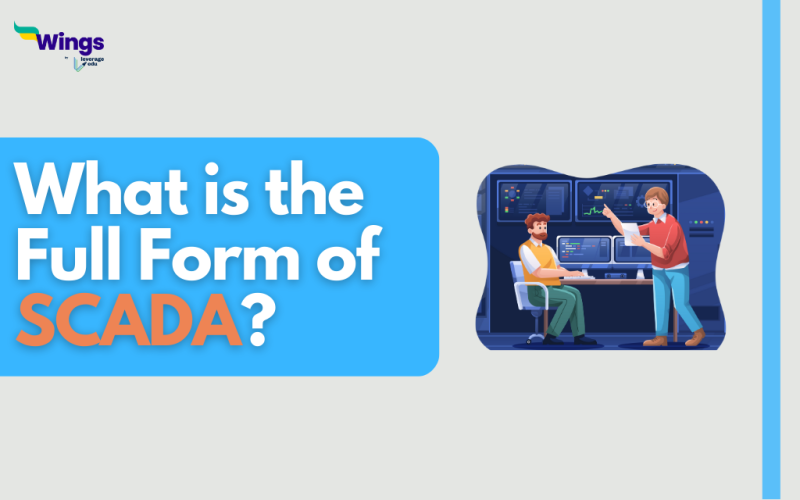The full form of SCADA in the electrical field is Supervisory Control and Data Acquisition. It is a computer system that gathers and covers real-time data. SCADA systems are deployed in a wide range of industries to track production processes and equipment. These computerised systems were first deployed in the 1960s. These are used by production companies to regulate the industry in remote places and globally. A SCADA system is based on a human-machine interface (HMI) to communicate with different parts of machinery such as pumps, valves, motors, sensors, etc. In this blog, you will learn more about SCADA, its applications, and how it works.
How Does SCADA Operate?
Table of Contents [show]
A SCADA system is an amalgamation of two electronic devices- programmable logic controllers (PLCs) and remote terminal units (RTUs). These devices communicate with multiple objects like industrial machinery, end devices, sensors, and HMIs. RTUs and PLCs transport data from the aforementioned objects to computer systems using Supervisory Control and Data Acquisition software. The software then analyses, transports, interprets, and displays data to related operators, helping them make decisions.
Also Read: What is the Full Form of ICS?
Main Components of SCADA
The three main types of components of SCADA are:
- Human Machine Interface (HMI)
- Programmable Logic Controller (PLC)
- Remote Terminal Unit (RTU)
Also Read: What is the Full Form of RFID?
Features of SCADA
Some of the critical features of a Supervisory Control and Data Acquisition system are:
- It can extract data from the past, store real-time data, and present the data graphically.
- It can handle alarms to intimate operators about salient features of the current system of a factory or production facility.
- It helps in report generation after getting a report template manually.
What is SCADA Used for?
SCADA software is used in various industries to assess old data, enhance efficiency, reduce outages, and manage industrial processes. Its common applications include controlling, monitoring, and analysing different devices and processes. This software has become a quintessential part of the following industries:
- Transportation
- Manufacturing
- Energy
- Oil and Gas
- Food and Beverage
- Wastewater Treatment
Also Read: What is the Full Form of DOP?
Advantages of SCADA
Here are some of the benefits of Supervisory Control and Data Acquisition:
- Reduction in workforce
- Efficient monitoring of machinery and equipment
- Data storage
- Generation of manual and automated data.
- Easy interpretation of old and real-time data.
- Remote access to trends, patterns, and real-time data
Popular Full Forms
We hope this blog has helped you understand the SCADA Full Form and everything related to it. If you want to know more, find the general full form list on our blog. In the world of short forms, you can rely on the Leverage edu page to know about more important full forms like this! Connect with us study abroad experts to achieve your international dream today!
 One app for all your study abroad needs
One app for all your study abroad needs















 45,000+ students trusted us with their dreams. Take the first step today!
45,000+ students trusted us with their dreams. Take the first step today!
